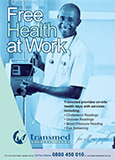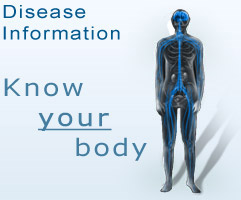Osteoporosis
What is osteoporosis?
Osteoporosis is a chronic progressive condition of the skeleton and is characterised by low bone mass and weakening of bone tissue, with a consequent increase in bone fragility and susceptibility to fracture.
Skeletal weakness leads to fractures with minor or unapparent trauma, particularly in the thoracic and lumbar spine, wrist and hip.
The condition often does not become clinically apparent until a fracture occurs, thus osteoporosis results in many individuals experiencing pain, disability and diminished quality of life.
The clinical diagnosis of osteoporosis is made on the basis of a bone mineral density (BMD) measurement. The World Health Organisation has established the following definitions of osteoporosis based on bone mass density measurements (reflected as a t-score) in Caucasian females:
- normal - bone density no lower than one standard deviation (SD) below the mean for young adult women (t-score above -1);
- low bone mass (osteopenia) - bone density 1 to 2.5 SD below the mean for young adult women (t-score between -1 and -2.5); and
- osteoporosis - bone density more than 2.5 SD below the normal mean for young adult females (t-score at or below -2.5).
Risk factors for osteoporosis include:
- advanced age
- being female
- Caucasian or Asian ethnicity
- family history of osteoporosis
- thin build
- amenorrhea (long periods of no menstruation)
- late onset of menstruation
- early or surgically-induced menopause
- physical inactivity
- alcohol and smoking
- androgen or oestrogen deficiency
- calcium deficiency
- use of certain drugs such as corticosteroids
- anorexia nervosa.
Types of osteoporosis
Primary osteoporosis
- More than 95% of osteoporosis cases are primary.
- It occurs spontaneously.
- Most older women with osteoporosis have a combination of postmenopausal and senile osteoporosis.
There are three further types of primary osteoporosis:
1. Type I osteoporosis (postmenopausal osteoporosis):
Osteoporosis develops in women after menopause, usually between the ages of 51 and 75, but it can begin earlier or later. Postmenopausal osteoporosis is caused by a lack of oestrogen, the main female hormone, which helps to regulate the incorporation of calcium into bones in women.
Osteoporosis can also occur in men who have been castrated or in men with low testosterone, as may occur in older men. Type 1 osteoporosis is six times more common in women than in men.
Bone loss is gradual in women leading up to menopause but accelerates at menopause. Women can lose up to 20% of their bone mass in the five to seven years after menopause, but not all women are at equal risk of developing postmenopausal osteoporosis.
2. Type II osteoporosis (senile osteoporosis):
Results from an age-related deficiency in calcium or vitamin D and an imbalance between the rate of bone breakdown and new bone formation. It typically affects patients older than 60 and is twice as common in women as in men. Vertebral compression fractures and fractures of the femoral neck, proximal humerus, proximal tibia and pelvis can occur.
Women often have both senile and postmenopausal osteoporosis.
3. Idiopathic osteoporosis:
This type is uncommon but occurs in children and young adults of both genders with normal gonadal function, normal vitamin levels and no obvious reason to have weak bones.
Secondary osteoporosis
Secondary osteoporosis accounts for less than 5% of osteoporosis cases. The causes may also aggravate bone loss and increase fracture risk in patients with primary osteoporosis. It occurs when an underlying condition, deficiency or drug causes osteoporosis.
Signs and symptoms
Initially, osteoporosis produces no symptoms as bone density loss occurs very gradually, but some people may never develop symptoms. Over time, bone density may decrease enough for bones to collapse or fracture, producing severe, sudden pain or gradually developing aching bone pain and deformities.
In long bones, the fracture usually occurs at the ends of the bones, usually from a fall, and the hips or wrist are commonly affected.
Spinal fractures usually occur in the middle to lower back and the weakened vertebrae may collapse spontaneously or only after a slight injury. The pain from vertebral fractures usually begins acutely, usually does not radiate, is aggravated by weight bearing, may produce local tenderness and generally begins to subside in one week. Residual pain may last for months or be constant. Multiple thoracic compression fractures eventually cause a hump in the back.
Abnormal stress on the spinal muscles and ligaments may cause chronic, dull, aching pain, particularly in the lower back.
Screening and diagnosis
DEXA scanning
Bone mineral density testing can be used to detect or confirm suspected osteoporosis even before a fracture occurs. The most useful test is the DEXA scan (dual-energy x-ray absorptiometry), which measures bone density at the sites at which major fractures are likely to occur in the spine and hip. This test is painless and can be performed in about five to 15 minutes. It is of benefit in people at high risk of developing osteoporosis and for those in whom the diagnosis is uncertain, as well as for monitoring of treatment (once every one to two years).
Plain x-ray
Plain radiography may be indicated if a fracture is already suspected or if patients have lost more than 3.81cm in height.
Ultrasound
This is sometimes used as a screening test, but is not very accurate.
Blood tests
Blood tests may be performed to measure calcium and phosphorus levels. Further testing may be needed to rule out treatable conditions that might lead to secondary osteoporosis.
Prevention of osteoporosis
Prevention is generally more successful than treatment - it is easier to prevent loss of bone density than to restore density once it has been lost.
Prevention involves:
- maintaining or increasing bone density by consuming adequate amounts of calcium and vitamin D
- calcium intake: all men and women should consume at least 1 000mg of elemental calcium daily. A daily intake of 1 200mg to 1 500mg of calcium is recommended for:
- postmenopausal women
- older men
- periods of increased requirements, e.g. pubertal growth, pregnancy and lactation
- calcium-rich foods including milk and other dairy products such as cheese, as well as green vegetables such as spinach and broccoli. One serving usually provides about 300mg
- diet: although diet alone is rarely adequate. Calcium supplements in the form of calcium carbonate or calcium citrate are commonly used, i.e. a tablet, effervescent tablet and powder forms are available in the market.
- vitamin D in doses of 400 units once a day is generally recommended, but up to 1 000 units per day is safe and may be helpful in osteoporosis patients.
- modification of risk factors:
- maintaining adequate body weight
- increasing weight-bearing exercise (e.g. walking and stair climbing increases bone density)
- minimising caffeine and alcohol intake
- quit smoking
- taking certain drugs listed below.
Clinical management
These drugs are used in the prevention and treatment of osteoporosis:
Biphosphonates
This is the most common drug to be taken. Several preparations exist in the South African market.
Oral biphosphonates must be taken with a full glass of water at least 30 minutes before the first meal of the day and you may not lie down during this period as biphosphonates can irritate the lining of the oesophagus. Weekly therapy is generally preferred for its greater convenience and fewer adverse effects.
The following individuals should not take biphosphonates:
- people with certain conditions of the oesophagus or stomach
- pregnant or nursing women
- people with low levels of calcium in the blood
- people with severe kidney disease.
Calcitonin
This drug is rarely used for the treatment of osteoporosis and only as a second-line drug. It can be considered in osteoporosis patients who develop acute painful vertebral collapse, as it has a central analgesic and prevents further bone loss during the period of immobilisation, which it also shortens. It may be taken by injection or nasal spray and needs to be used with adequate calcium and vitamin D.
Hormone replacement therapy (HRT)
This is used in the prevention and treatment of osteoporosis. Several preparations are available. Oestrogen replacement therapy helps maintain bone density in women. This therapy is most effective when started within four to six years after menopause, but starting it later can still slow bone loss and reduce the risk of fractures. Use of oestrogen increases the risk of venous clotting disorders and endometrial cancer, and may increase the risk of breast cancer.
Selective oestrogen-receptor modulators
This is rarely used and mostly in persons who need oestrogen, but may not take conventional oestrogen preparations.
Parathyroid hormone (teriparatide)
This is rarely used in the treatment of established osteoporosis as it is expensive, but seemingly effective if given daily by injection for an average of 20 months.
Testosterone
Men do not benefit from oestrogen but may benefit from testosterone replacement therapy if their testosterone level is low.
Strontium ranelate
This is used as first line treatment in younger patients under 60 years.
Anabolic steroids (nandrolone)
This is mainly used in men, but its value is questionable versus other agents.
Surgical management of vertebral fractures
Hip fractures are usually treated by surgery or, if surgery is not feasible, by bed rest with or without traction. Wrist fractures are not usually treated in plaster cases, but may require surgery in rare cases. A collapsed vertebra can be repaired by vertebroplasty or by kyphoplasty.
References
http://www.uptodate.com/home/index.html
 TransmedBanner4.jpg)

